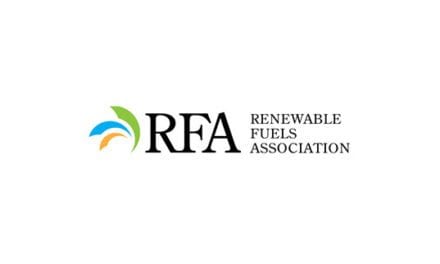Energy Prices Test Support
This week’s energy markets were very active.
- Demand has softened and supply is improving as Libya returns to export markets.
- The Polar Vortex is back in the news. Weathermen are predicting a colder autumn.
- Distillate stocks lag last year’s level by six million barrels
- Natural gas prices fell, now near support at $3.73
Sincerely,
Alan Levine
Chairman, Powerhouse
The International Energy Agency (IEA) has revised its demand estimates downward for this year and for 2015. This comes at a time when Libyan exports are again starting to move. Ironically, reduced demand means that Libya is challenged to find buyers. The country has reportedly started exports from Ras Lanuf and expects to renew activity at Es Sider this week.
The weatherman’s latest darling, the Polar Vortex, may be making an appearance this fall. AccuWeather suggests that the vortex could provide a “significant shot of chilly air into the interior Northeast sometime in mid- to late-September.” The forecaster says that “temperatures will not be as extreme in November when compared to last year, but October could be an extreme month.” If El Nino appears this winter, the Northeast could have a couple of big storms in December and January.
Supply/Demand Balances
Supply/demand data in the United States for the week ending August 8, 2014 were released by the Energy Information Administration.
Total commercial stocks of petroleum increased, adding net 1.5 million barrels last week. Declines were seen in gasoline and distillate fuel oil stocks. Gains were largely in crude oil, propane and Other Oils. Supplies now stand at 1.122 billion barrels of oil. Current supply has moved ahead of last year by 2.1 million barrels.
Commercial crude oil stocks rose 1.4 million barrels to 367.0 million barrels during the report week. This is the first reversal of a reduction that began in early May when crude oil stocks were at 397.6 million barrels. Stocks are 6.4 million barrels higher than they were at the start of 2014 and 6.5 million barrels higher than last year at this time.
Increases were seen in every PADD region east of the Rockies except for the Midwest. A 1.7 million decline was found on the West Coast. The East Coast gain of 1.3 million barrels was relatively large. Stocks at Cushing, OK were up 0.4 million barrels, moving to 18.4 million barrels.
Crude oil imports increased 283,000 barrels daily during the report week, averaging 7.8 million barrels daily. Imports are down 4.6 per cent from the same four-week period last year. Weekly observations may vary widely but the year-on-year declines are firmly in place.
U.S. crude oil production exceeded 8.5 million barrels a day according to the latest report. Output is approaching an all-time record.
Refinery utilization rates continue to ease off, coming in at 91.6 percent. Regional utilization fell sharply on the West Coast where rates fell 3.1percentage points to 84 per cent. Midwest refinery rates fell again and are now down to 91.4 per cent. Crude oil inputs to refineries fell to 16.2 million barrels per day.
Gasoline production fell 241,000 barrels per day. This was consistent with a drop in demand to 8.9 million barrels per day. The four-week average is just over 9 million barrels per day. There was a decline in gasoline stocks of 1.2 million barrels to 212.7 million barrels. The drop occurred in most regions. Declining gasoline stocks are common for this time of year.
Distillate fuel oil supplies fell 2.4 million barrels during the report week. The declines were largely centered on the East Coast (-1.4 million barrels). Supplies in the U.S. are falling further below last year’s levels. Distillate stocks now lag last year’s level by six million barrels. This is troublesome in view of the weakness being seen in distillate prices. And exports continue to eat into domestic supplies, now being sent out at the rate of 1.2 million barrels daily. Distillate fuel oil demand remains over four million barrels daily. Refinery production of distillate fuels fell to 4.7 million barrels per day.
Propane inventories added another 1.8 million barrels in the U.S. Total stocks are 70.3 million barrels. Gulf Coast stocks are 38.7 million barrels, up 1.3 million barrels for the week. Midwest stocks were up 0.5 million barrels. Inventories there are now 23.4 million barrels.
Natural Gas
Prices for natural gas fell sharply this week. This reflected cool weather and the inability to develop cooling degree days in this unusually cool summer. Prices had moved higher over the previous week but the gain has been all but erased. Support is at $2.73.
According to the EIA: Net injections into storage were higher than average. The net injection reported for the week ending August 8 was 78 Bcf, 33 Bcf larger than the five-year average net injection of 45 Bcf and 8 Bcf larger than last year’s net injection of 70 Bcf. Working gas inventories totaled 2,467 Bcf, 530 Bcf (17.7%) less than last year at this time and 575 Bcf (18.9%) below the five-year (2009-13) average.
Twelve weeks remain until October 31 when the injection period traditionally ends. EIA puts the five year average underground storage of natural gas at the end of October at 3.851 Tcf. It requires weekly injections averaging 114 Bcf to reach that level. Recent injections have been lower than expectations and the average injection needed to reach the average of the past five years has been growing.
U.S. consumption decreased by 0.2%, mainly due to a decline in power-sector gas demand as temperatures remained mild in most areas of the country.
Futures trading involves significant risk and is not suitable for everyone. Transactions in securities futures, commodity and index futures and options on future markets carry a high degree of risk. The amount of initial margin is small relative to the value of the futures contract, meaning that transactions are heavily “leveraged”. A relatively small market movement will have a proportionately larger impact on the funds you have deposited or will have to deposit: this may work against you as well as for you. You may sustain a total loss of initial margin funds and any additional funds deposited with the clearing firm to maintain your position. If the market moves against your position or margin levels are increased, you may be called upon to pay substantial additional funds on short notice to maintain your position. If you fail to comply with a request for additional funds within the time prescribed, your position may be liquidated at a loss and you will be liable for any resulting deficit. Past performance may not be indicative of future results. This is not an offer to invest in any investment program.Vol. PH 03 NO. 33Was this memo helpful? We’d like your feedback.
Please respond to [email protected]
Copyright © 2014 Powerhouse, All rights reserved.











